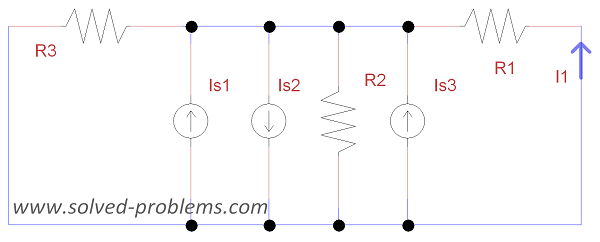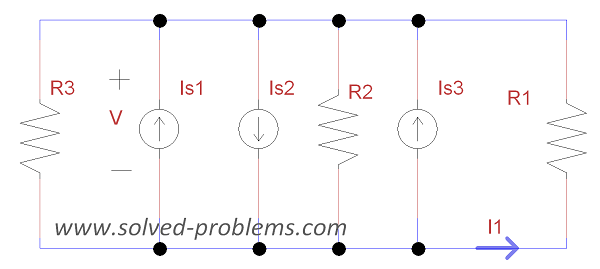
Find ![]() using single node-pair analysis (do not reduce the circuit).
using single node-pair analysis (do not reduce the circuit).![]() and
and ![]() .
.
Solution
a) Redraw the circuit if necessary. Mark the voltage across nodes:

b) Apply KCL in one of nodes:![]() .
.
Please note that:
i) Voltage across each element is ![]() with the shown polarity.
with the shown polarity.
ii) We do not use ![]() , because it is unknown. We try to find any current in term of the main quantity, i.e.
, because it is unknown. We try to find any current in term of the main quantity, i.e. ![]() , which is unknown. Recall that main quantities are
, which is unknown. Recall that main quantities are
- node voltages in nodal analysis,
- node voltage in single-node-pair analysis,
- loop current in single loop analysis, and
- mesh currents in mesh analysis.
iii) Since we are not using ![]() , we do not care about its direction.
, we do not care about its direction.
Eq. (1) gives ![]() .
.
c) Determine required quantity, ![]() using main quantity, i.e.
using main quantity, i.e. ![]() :
:
![]()
Leave a Reply